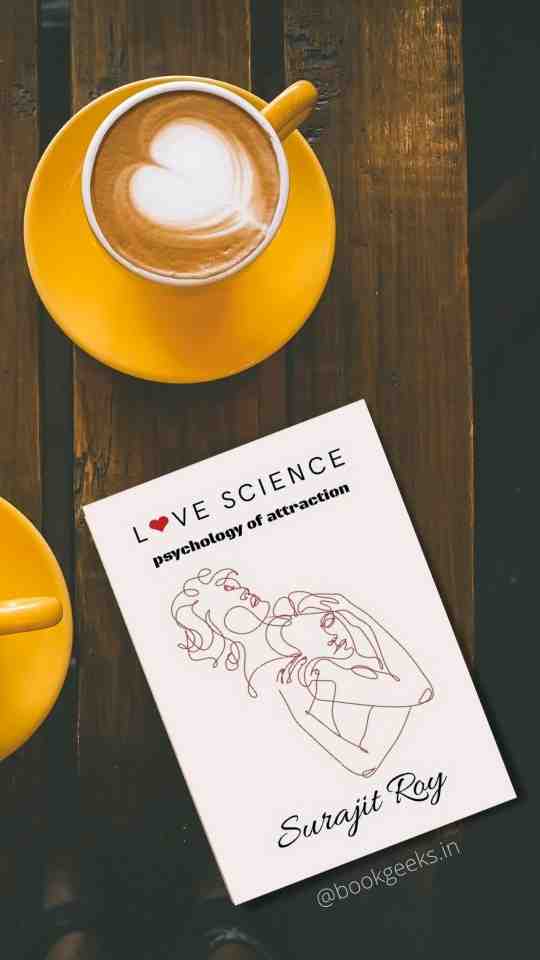CONCEPT: 4/5 WRITING: 2.5/5 RELEVANCE: 4/5 OVERALL: 2.5/5
“The end goal of all types of a love relationship is to have a similar and satisfying relationship.”
– Surajit Roy, Love Science
Love: The universal emotion
If there is one emotion that appeals to every human universally, that becomes one of our strongest desires, needs, and wants – it is the emotion of love.
Love is that universal emotion that lies at the core of our lives. Love elates us like no other, love motivates us, makes us stronger, and makes us who we are. And yet it is love, that saddens us too, that has the capability to leave us lonely, hollowed, and depressed.
An enigma to decode, it wouldn’t be wrong to say that love relationships are the reason for our existence. But how to understand it, how to earn it, how to respect it, and how to nurture it? Very few of us set out to decode its mystery and attempt to comprehend its role in leading a blissful life.
What the book attempts to achieve?
Love Science is one such book that takes a necessary step in the right direction. At the core of the book, lies the attempt to study love relationships and understand the science of love. So that we as humans, value and nurture our most beautiful relationship/emotion.
What to expect?
Expect a nonfiction book that talks about love as an emotion and love relationships. Expect a short read of just under 100 pages. Expect a book that is ideal for beginners. Finally, expect a book that delves into both psychology and philosophy. Expect a book that teaches you some important lessons about love.
The language
The language is neither too simple nor too complicated and keeping that in mind, the book can be read by beginners as well as regular readers.
Decoding the enigma called love
Love Science talks of a love relationship in not just the physical aspect but also in the behavioral, emotional, and cultural sense. It delves into the many reasons why someone falls in love and why some people fall out of it.
It builds upon some of the most integral parts of a relationship, that are often dismissed as secondary, and that often do not feature in the more prominent definitions of love. One of these, for example, is trust. Others include respect, independence, patience, security, etc.
“When you are in love, being patient with your partner is the best way to make a relationship last.”
– Surajit Roy, Love Science
Major themes explored in the book
The book comes divided into five major sections – The Foundation of Love, Evolution of Love in Different Age Groups, The Biochemistry of Love, Everyday realization of Love, and When Love Goes Amiss. These are further divided into smaller sections that each delve into the topic, covering it all in good detail.
What did I like?
I like the way Love Science covers many important aspects which are often neglected and is pretty much exhaustive in its definition of love. Even though it’s a short read, the extent of the content is such that it doesn’t leave the reader wanting.
The writing
The writing is monotonous and mechanical as opposed to experimental and friendly. The book also doesn’t come across as very practical. Of course, there are the dos and don’ts mentioned every now and then, but there is a visible lack of good examples.
The author breaks the monotony by mentioning Bollywood songs at the beginning of every chapter, with each song trying to capture the essence and emotion of the chapter.
Also, the writing shows a visible disconnect. Different paragraphs in the same chapters seem unrelated and haphazard, and the same content is sometimes repeated in many chapters, albeit conveyed through different words.
What I didn’t like?
The book assumes a preachy tone and the author does not make the necessary efforts to establish an easy camaraderie with the reader. The book does not come across as friendly and that takes away major brownie points, not to mention bringing down the reading pleasure.
What could have been better?
I like the writing in my nonfiction reads to be complemented with the help of real and imaginary examples, bullet points, chapter summaries, major takeaway boxes, points to remember, practice exercises, illustrations, and other engaging and persuasive ways of introducing the concept. But in Love Science, one rarely comes across these.
Pick the book if
- You are looking for a nonfiction book on love relationships.
- You want to understand the intricacies of love.
- You are looking for a short read.
Skip the book if
- You are looking for a detailed and cohesive read,
- You like nonfiction writing that is engaging and illustrative.
Can’t wait to read it? Buy your copy using the link below.
